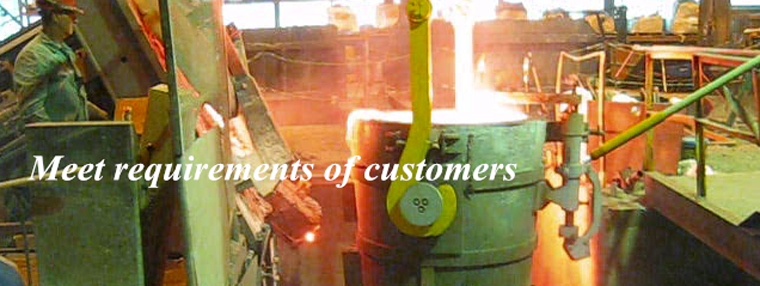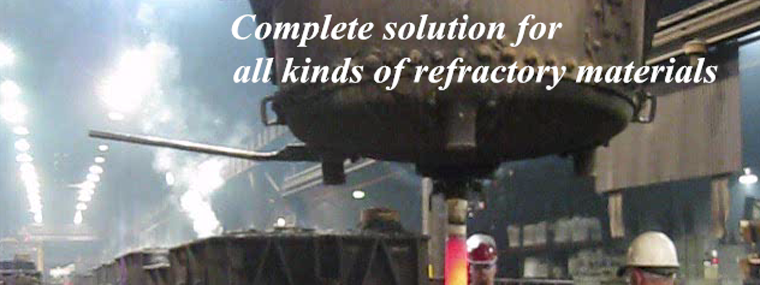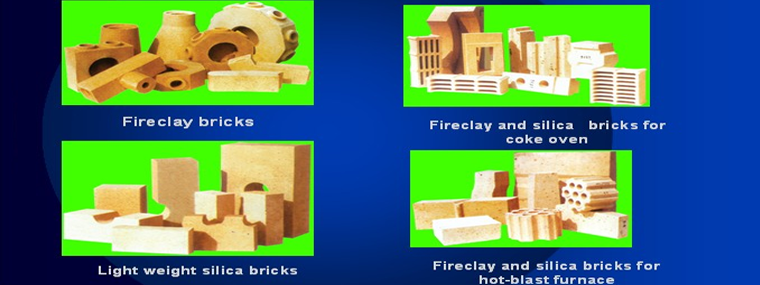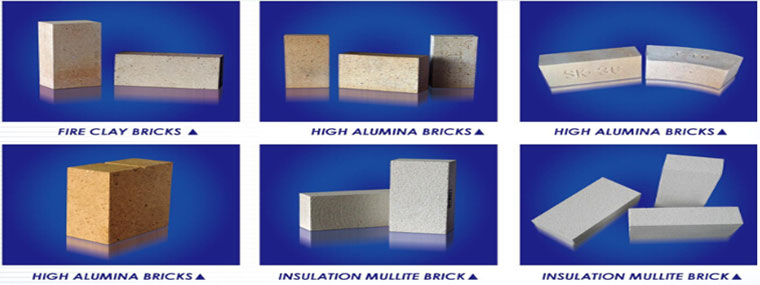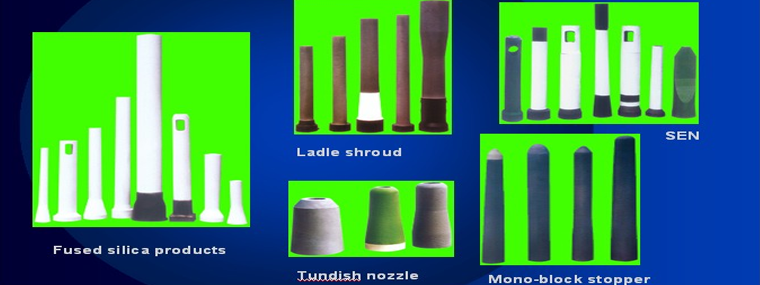Induction melting furnace with refractory materials should have the characteristics of a frequency core induction furnace work characteristics Heart induction furnace heat from the furnace located in the lower part of the groove sensor, aluminum melt in the groove is induction heating, and then through Circulation or unidirectional flow heat exchange with molten aluminum in the furnace. Large-tonnage heart induction melting furnace using the United States Ajax (Ajax) developed spray-type sensor. This kind of sensor not only greatly reduces the temperature difference between the molten metal in the melt channel and the molten metal in the furnace, but also prevents the chemical reaction products from accumulating on the melting groove wall to a certain extent, altering the clogging of the melt channel. However, Electric power increases, aluminum flow rate increases, and the complexity of the shape of the melt channel, an increase of wear lining lining refractory and structural stress; melting groove wall thinning and water jacket set to increase the refractory withstand heat stress. There is no doubt that the low energy consumption of the induction furnace lies in its continuous operation mode, which undoubtedly increases the time and opportunity for the refractory melt to react with the melt, and the possibility of plugging is always present. 2 Centerless induction furnace work characteristics Commonly used induction furnace is divided into two kinds of frequency and intermediate frequency, from the current development trend, intermediate frequency furnace more promising. What they both have in common is that they can be operated intermittently or continuously as required. The furnace is exposed to high thermal stresses due to repeated "addition-melting-tapping" operations. Power frequency furnace metal liquid than mid-frequency furnace tumbling more severe erosion that is subject to more serious erosion, while the intermediate frequency furnace than the power (which is twice the frequency furnace), high power density, melting speed, Hot and cold alternately faster. Due to the high turn-to-turn voltage (about 2 ~ 4 times of the power frequency furnace), the molten metal infiltrating the lining through the cracks is overheated and the possibility of coil damage is relatively large. 3 Refractory materials should meet the requirements Refractory lining material, whether it is used for heart induction furnace, or heartless induction furnace, should meet the following requirements. (1) Good chemical stability Metallic aluminum and aluminum alloy not only have high chemical activity but also excellent melt flowability. The aluminum melt has a viscosity of only 1.04 centipoise at 750 ° C, which is quite close to the viscosity of water at 1.0 ° C (1.0 cps) at 20 ° C, which is why it is prone to penetrate and react chemically with the inside of the lining. Aluminum in the refractory contact with the temperature, the aluminum from strong reductant role. Refractories in the SiO2, TiO2, FeO and other oxides to be reduced by aluminum. The reaction between the molten aluminum and the refractory of the lining not only affects the quality of the product, but also causes the surface of the lining to nodulate, bulge and sediment, and the interface of the immersed aluminum liquid and the original brick is in danger of cracking. Will also cause peeling. Therefore, the contact with the molten aluminum lining material, must have high chemical stability and as little impregnation. (2) Good scour resistance Generally, in order to make the furnace have high electrical efficiency, the material of the furnace wall is designed to be very thin. However, during the operation of the furnace, due to the electromagnetic force, the molten metal in the furnace keeps tumbling Stirring, continuous erosion of the lining and wear. Interested induction furnace, due to the use of jet-type melt channel, melt-channel refractory erosion and wear more serious. Therefore, the required refractory material must have high mechanical strength and hardness. (3) high density and volume stability As a refractory material for smelting furnaces, it is hoped that higher density and volume stability will be obtained under a certain material condition. The level of body density reflects the amount of stomata inside the body, especially the degree of sintering. The higher the volume stability of the material, the smaller the possibility of cracking during sintering and use. The smaller the width of the crack generated, the stronger the anti-penetration ability. (4) Difficult to Produce Hearths It is very unlikely that heaters will form due to the presence of impurities (such as Al2O3) on the surface or inside the melt. Because the furnace will significantly reduce the capacity of the furnace, and the metal itself is dense, tough, get rid of it is very difficult. (5) Not easily wetted and infiltrated by molten metal It is well-known that refractories are brittle materials that inevitably generate cracks during heating and cooling. However, one of the key factors that determine its life is the size of the crack and the rate of crack propagation. The crack propagation and the molten metal on the contact material wetting and penetration capacity of the size. The worse the wetting ability, the more favorable. (6) good resistance to cold and heat This is particularly important for heartless induction furnace. Because no-hearth furnace operation as a "feeding - melting - baked" process of continuous cycling, lining materials repeatedly subjected to thermal shock. If the refractory thermal shock resistance is poor, it is easy to produce cracks and crack growth, liquid metal will penetrate to the coil in a short period of time, resulting in the entire lining scrapped. 3, Induction melting furnace refractory Although there are heart induction furnace and heartless induction furnace operating temperature is similar, but due to structural differences, different modes of operation, the applicable refractory materials vary. Since the early 1980s, I have done a lot of research on the development of refractories for aluminum melting furnaces and have successfully developed the dry-forming materials for high-strength castables and hearthless furnaces that are especially suitable for hearth furnaces. 1 heart induction furnace with high-strength refractory castable heart induction furnace furnace lining material is divided into furnace cover, hearth, throat and sensor melting refractory four parts. Throat, especially the melt channel refractory material is the most critical material, directly affect the furnace life and operating costs. (1) Furnace Refractory The main function of the furnace cover is to reduce the heat loss of the furnace and prevent splashing of molten metal during charging and melting. This requires good thermal insulation properties of the lid material, light weight and strong resistance to erosion. Based on this, most of the current use of light weight, low thermal conductivity of aluminum silicate refractory fiber lining, due to the operating temperature is usually lower than 800 ℃, and therefore the use of heat-resistant steel rivets and heat-resistant steel mesh fixed to the cover shell on. This cover is not only thermal insulation and lightweight, so close and open very convenient. (2) Furnace refractory Furnace refractory material used in the course of the physical and chemical effects, although not as good as the melting groove refractory material, but its chemical properties should also be inert to the liquid aluminum, high strength and density. Therefore, should use the excellent performance of low porosity, high-density high-alumina brick masonry. Lay brick process should pay special attention to reduce the width of brick joints, and filled with mud. (3) throat and melt channel refractory laryngeal and melt channel structure is complex, should not use brick masonry, the main use of amorphous refractory material. After a careful analysis of the stress state of the refractory in the melting ditch, according to the actual situation in our country, a great deal of laboratory research work has been done on the grading of particles, the amount of binding agent, the amount of cement dispersing accelerator and so on, Particularly suitable for heart induction furnace sensor used in high-performance castables. The castable is made of high-aluminum refractories, corundum, mullite-based crystal phase, the physical and chemical properties of indicators in Table 1. Analysis of the data in Table 1, we can see that this casting material at room temperature and high temperature strength are high, especially at 850 ℃ after burning strength relative to 110 ℃ drying intensity, the decrease is small, so this castable in use Anti-erosion process, wear-resistant. Erosion tests show that this material is not easily infiltrated by aluminum and shows no sign of reaction. 2 coreless induction melting furnace with refractory induction furnace induction furnace because of its flexible mode of operation, especially the development and progress of static frequency conversion technology, the development is extremely rapid. However, as the power and capacity of the furnace increase, the quality of the melted aluminum increases and the requirements for the refractory material used are even more harsh. As a heartless induction furnace refractory materials, should have very good thermal shock resistance and resistance to crack propagation capacity. Obviously, it is not appropriate to use the castable used in the heart induction furnace as a hearthless furnace lining. According to the actual use of hearth lining at home and abroad, we set the main direction of dry-formed refractory materials. Dry-forming refractory material is a kind of new amorphous refractory material that can hardly warm up and bake after a short time of vibration or ramming molding without water and any liquid additives. It is a special heat-setting refractory material that, when heated, causes the sintering agent to exert a very high strength on the working layer, while the non-working layer remains unsplit and has a bulk structure. During use, when the hot working layer cracks, the non-sintered lining layer can absorb localized concentrated thermal stress, prevent the extension of the crack and ensure the safe use of the furnace. Since 1989, on the basis of our research, we have done a lot of experiments on raw material selection, particle size distribution, and the selection of binders. After a comprehensive comparison of multiple formulations of the test, eventually developed a special low-temperature sintering agent of the new neutral dry-forming lining material.
Induction melting furnace with refractory materials
PRODUCTS SEARCH

Time Power Industrial Limited Tel/Fax:+86-532-68879581 Email:ailinwal@vip.sina.com ADD: 1-102, No. 11 Fuhuan Road, Qingdao, China 266035
